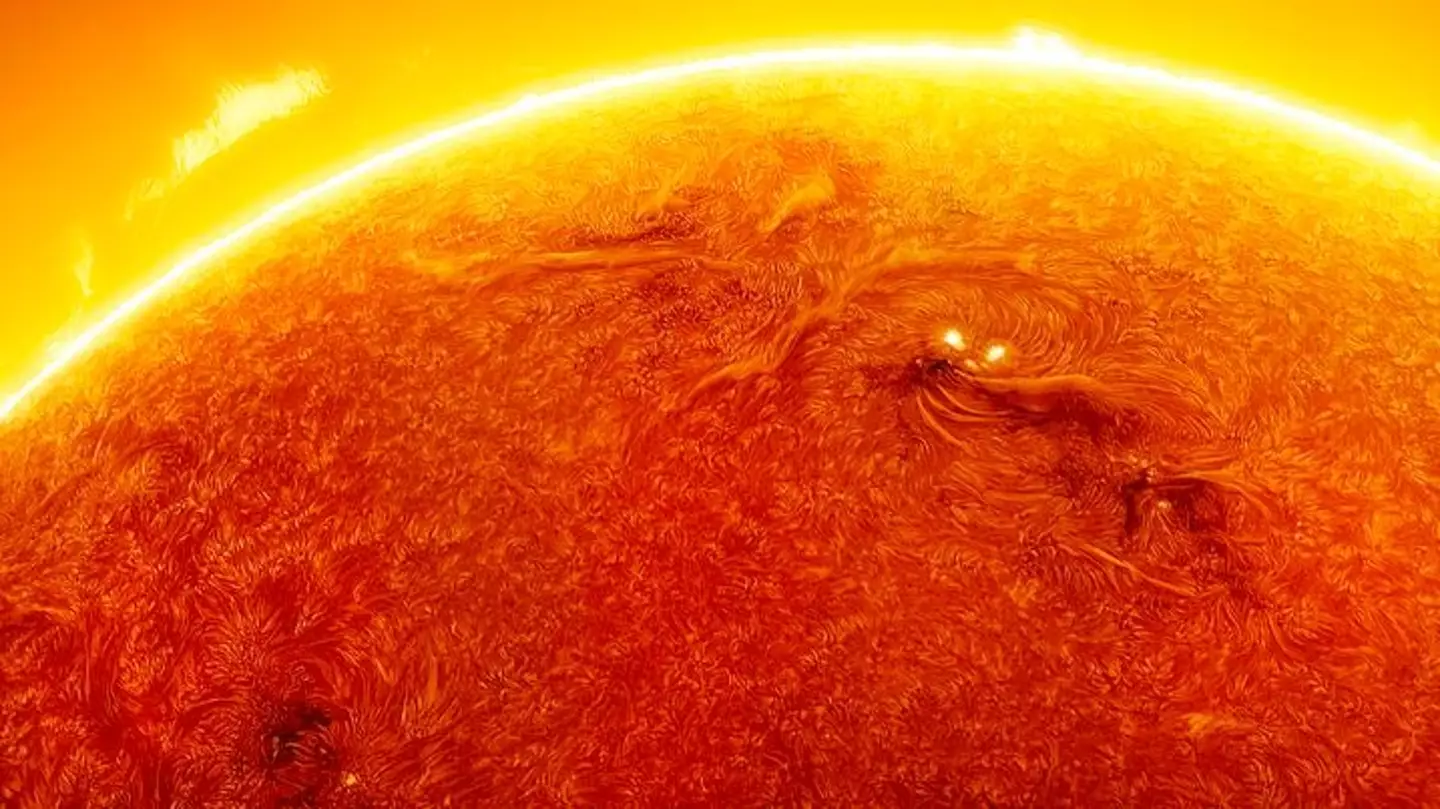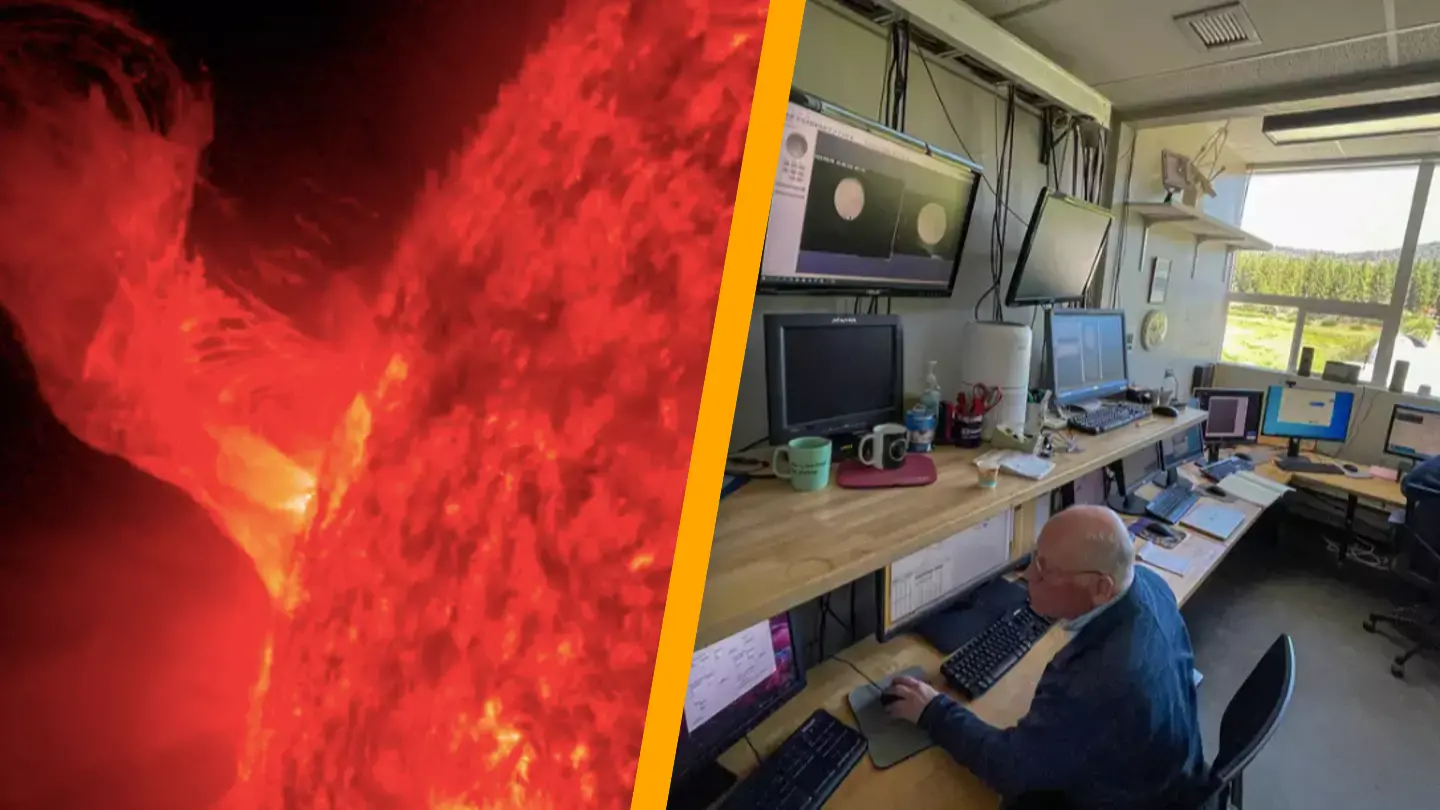The sun, a crucial component of our solar system, emits light and heat essential for life on Earth. However, an intriguing event was recorded by scientists as they observed a portion of the sun “break away.”
Using NASA’s James Webb Telescope, a remarkable moment was captured where a segment of the sun detached from its surface and was swept into a polar vortex, gaining significant attention online.
Space weather physicist and research scientist Tamitha Skov from The Aerospace Corporation in Southern California shared the news and imagery of this phenomenon on X.
“Talk about Polar Vortex!” she commented. “Material from a northern prominence just broke away from the main filament & is now circulating in a massive polar vortex around the north pole of our Star.”
She further stated, “Implications for understanding the Sun’s atmospheric dynamics above 55° here cannot be overstated!”
This event occurred on February 2, 2023. According to NASA, a solar prominence is a large, bright feature extending outward from the sun’s surface. These prominences are anchored in the photosphere, the sun’s outer layer, and extend into the sun’s corona, its hot outer atmosphere.
The ‘red-glowing looped material’ forming a solar prominence is plasma, a super-hot gas composed of electrically charged hydrogen and helium.
In simpler terms, a substantial piece of plasma detached from the sun’s surface and circled its North Pole. The polar vortex it joined is distinct from the polar vortices we experience on Earth.

On Earth, a polar vortex is a large area of cold air and low pressure that forms in the stratosphere, encircling both poles, as per the National Weather Service.
Why was this event in 2023 so significant? It’s because it’s not a common occurrence to witness such an event.
Scott McIntosh, a solar physicist and deputy director at the National Center for Atmospheric Research in Boulder, Colorado, explained to Space.com that the prominence mentioned by Skov appears at the 55-degree latitude around the sun’s polar crowns every 11 years.
Scientists suggest it relates to the sun’s magnetic field reversal, which occurs once every solar cycle, though the exact cause remains unknown.
“Once every solar cycle, it forms at the 55-degree latitude and it starts to march up to the solar poles,” McIntosh noted. “It’s very curious. There is a big ‘why’ question around it. Why does it only move toward the pole one time and then disappears and then comes back, magically, three or four years later in exactly the same region?”

